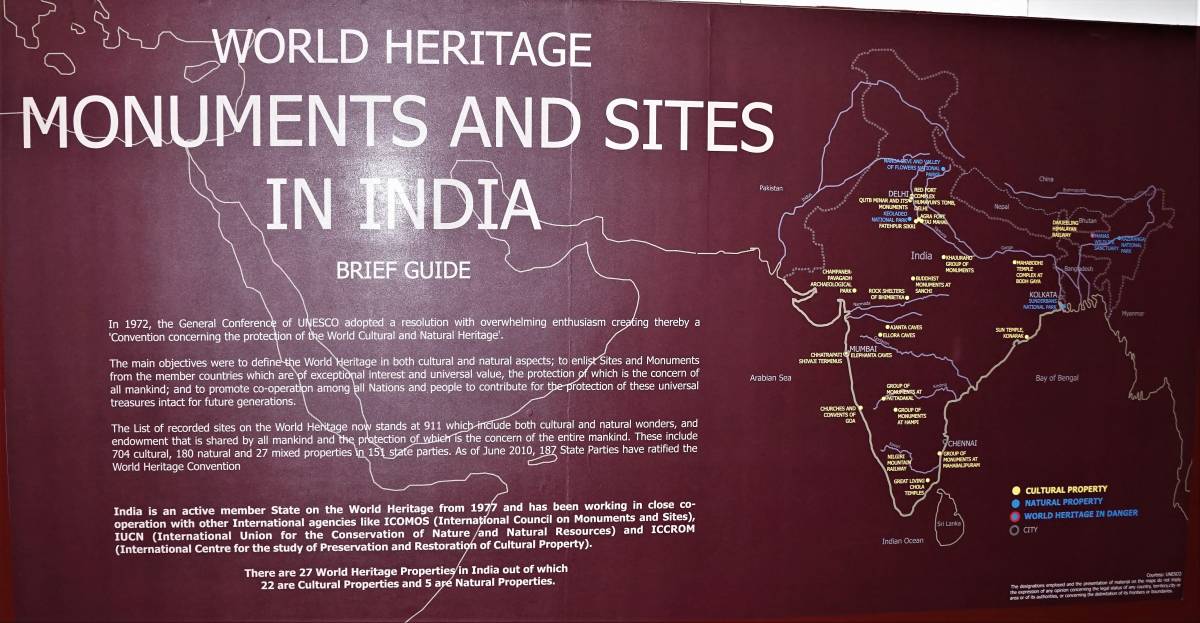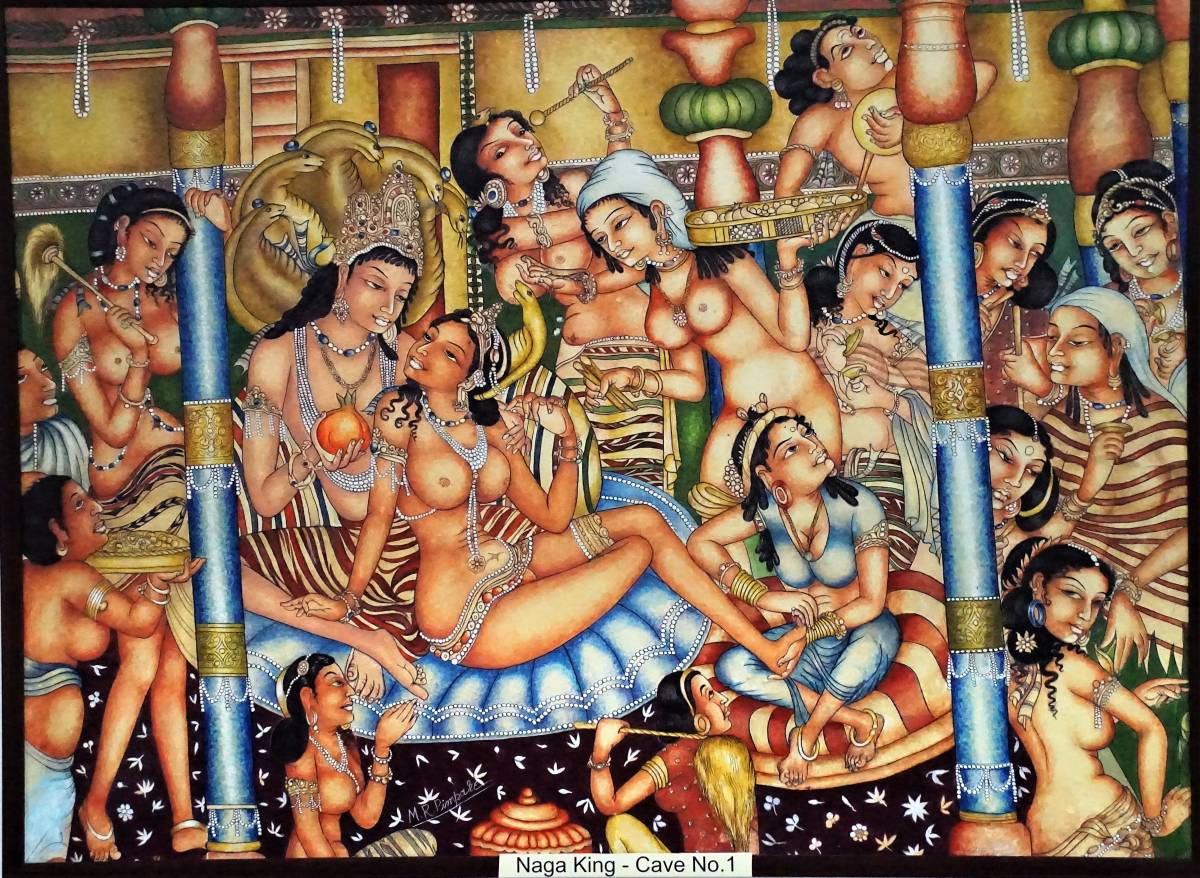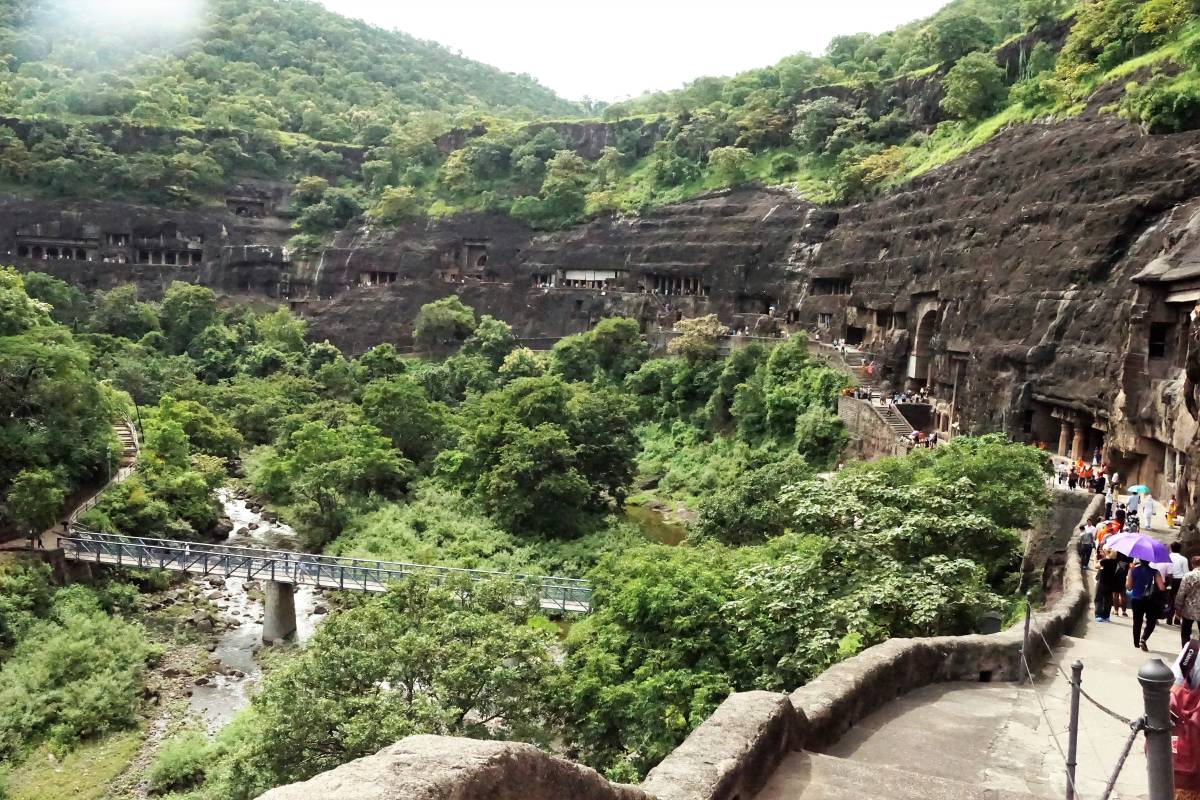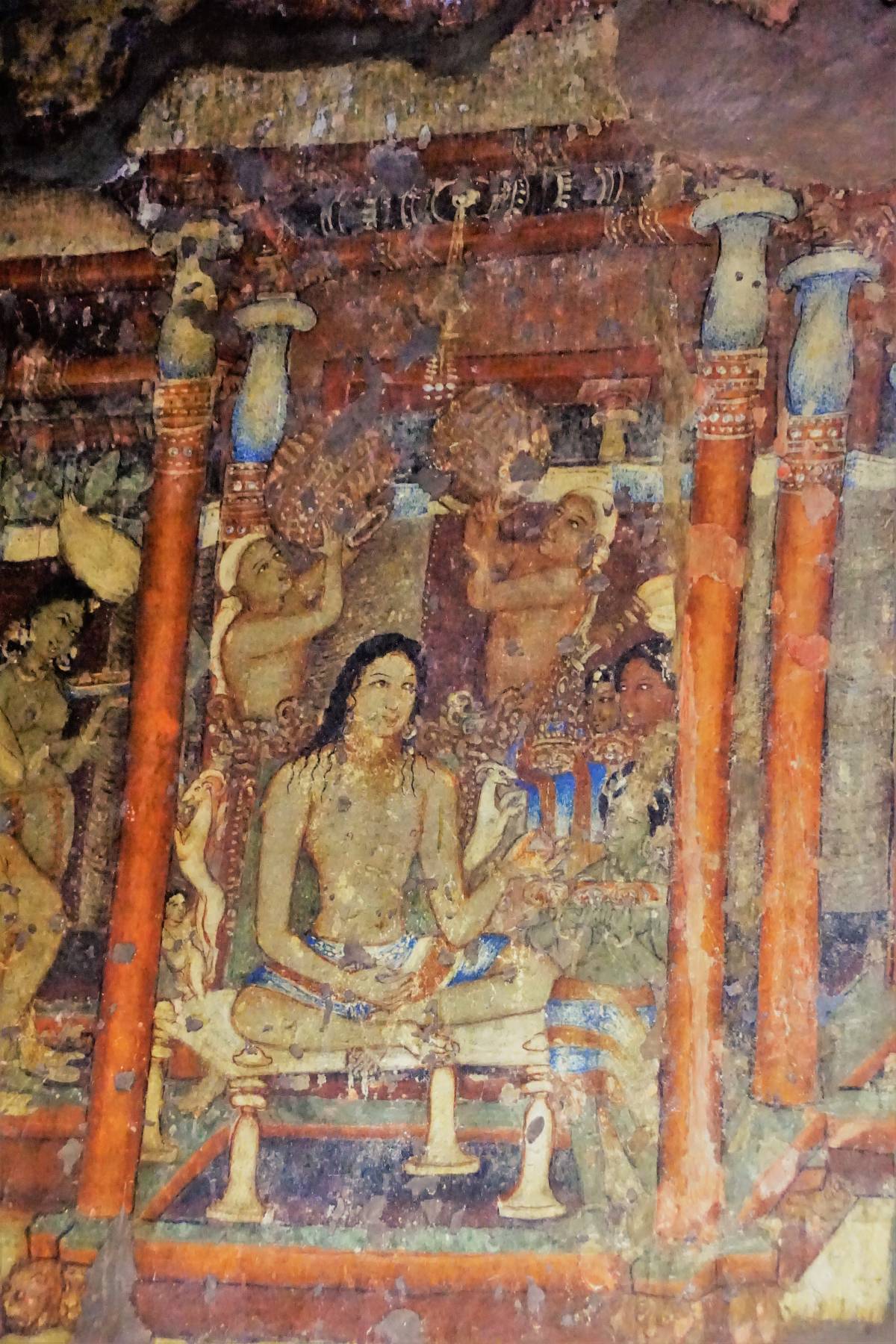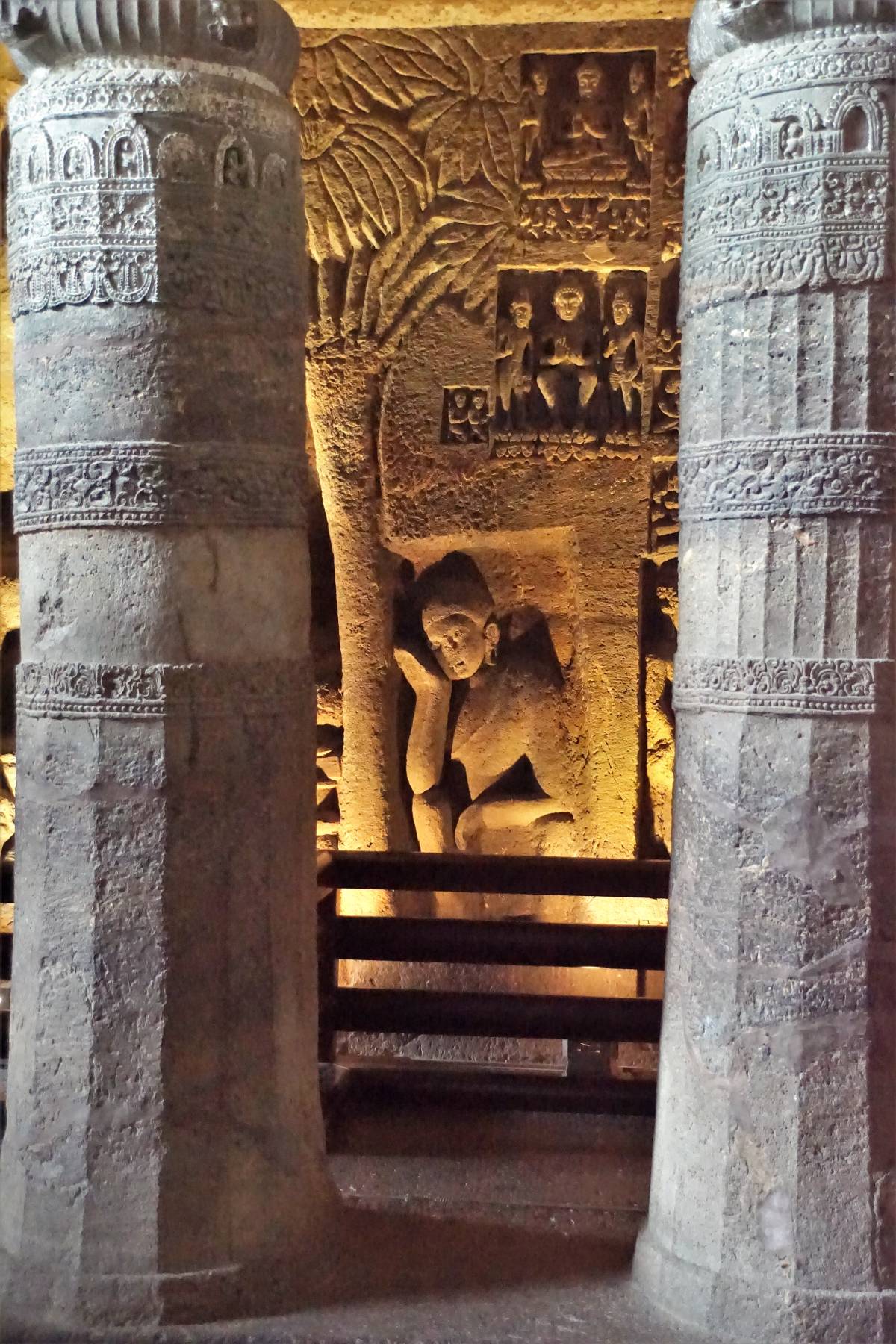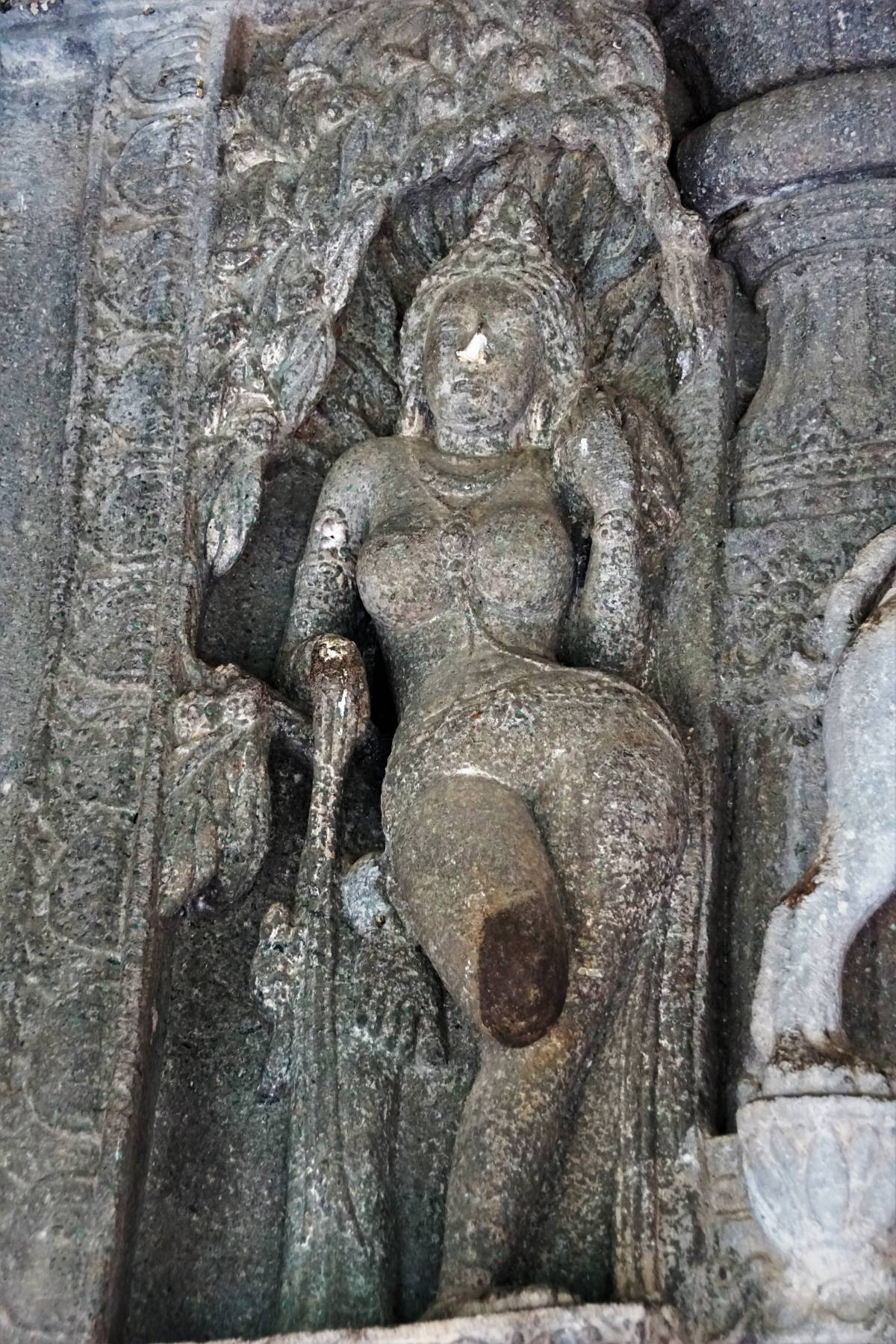THE ASTONISHING AJANTA CAVES IN INDIA
The Ajanta Caves
There are about 30 caves at the Ajanta Caves in India. The rock-cut Buddhist monuments date from the 2nd century BCE to about 480 CE. Not all the caves are open to the public, some are undergoing restoration. The paintings and rock-cut sculptures are described as among the finest examples of ancient Indian art. They had been lost to the world until 1890 when a British officer, Captain John Smith, discovered them when pursuing a tiger. 


It is breath-taking when you come up the rise and see the caves carved into the side of the cliff that curves along the right side while a river cuts through the green valley to the left. From the parking lot it is a short hike up the slopes and steps to the caves. Some people who were incapable of making it on their own were carried up by porters. There are a lot of steps on this visit, but mostly they are not very long, except the initial climb to the site. Some at the caves are briefly challenging.


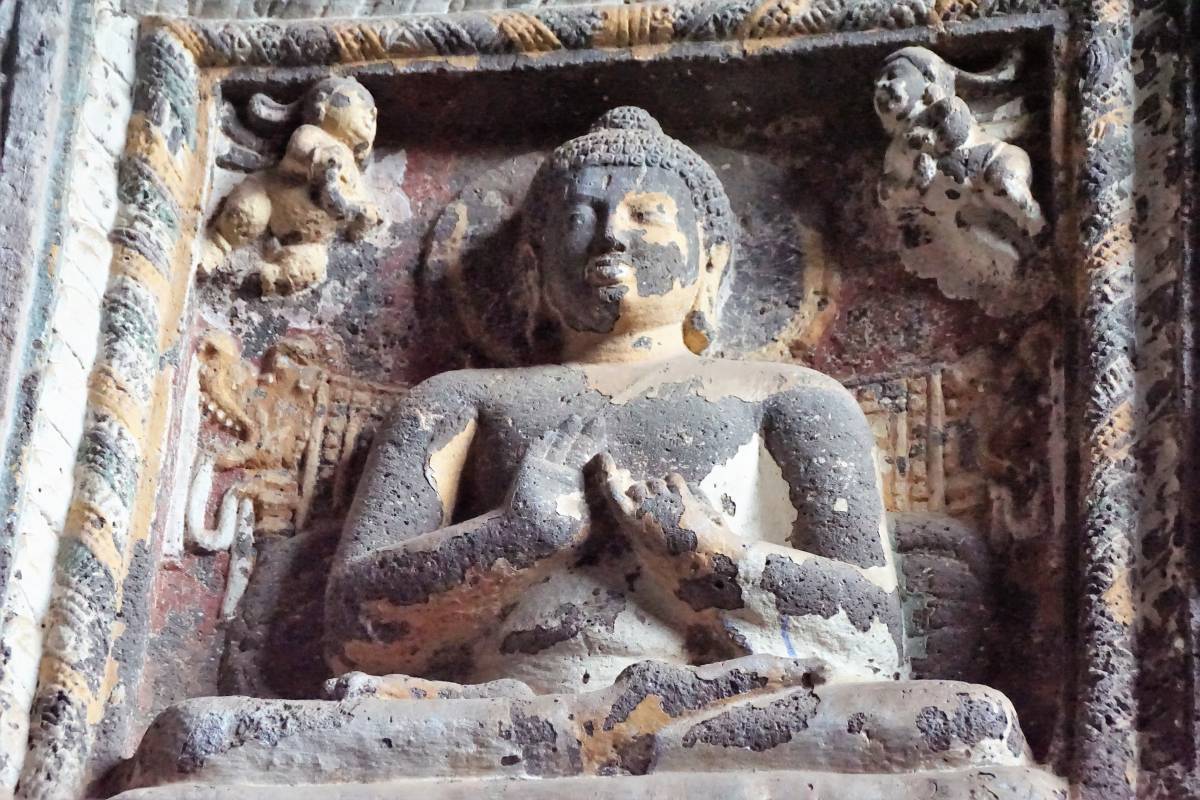

The stone is volcanic, which makes it hard in nature, but soft to carve. One of the reasons the paintings have survived so well is because they were cut off from exposure to humans. With this in mind, the authorities are doing all they can to preserve the art. You must take off your shoes when entering a cave and camera flashes are not allowed. 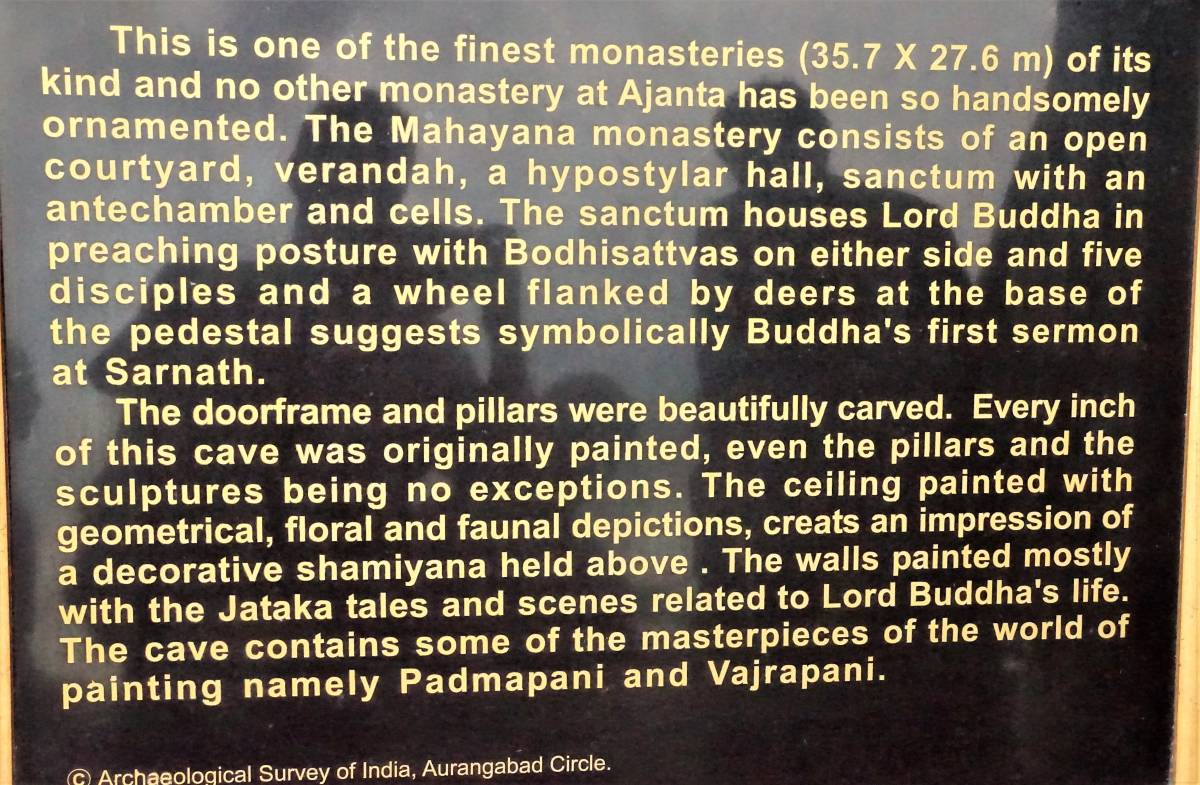
The murals tell the story of Buddha’s life, along with ‘tales of his previous earthly experiences.’

The stone is volcanic, which makes it hard in nature, but soft to carve. One of the reasons the paintings have survived so well is because they were cut off from exposure to humans. With this in mind, the authorities are doing all they can to preserve the art. You must take off your shoes when entering a cave and camera flashes are not allowed. 

The caves are either monasteries or chapels. 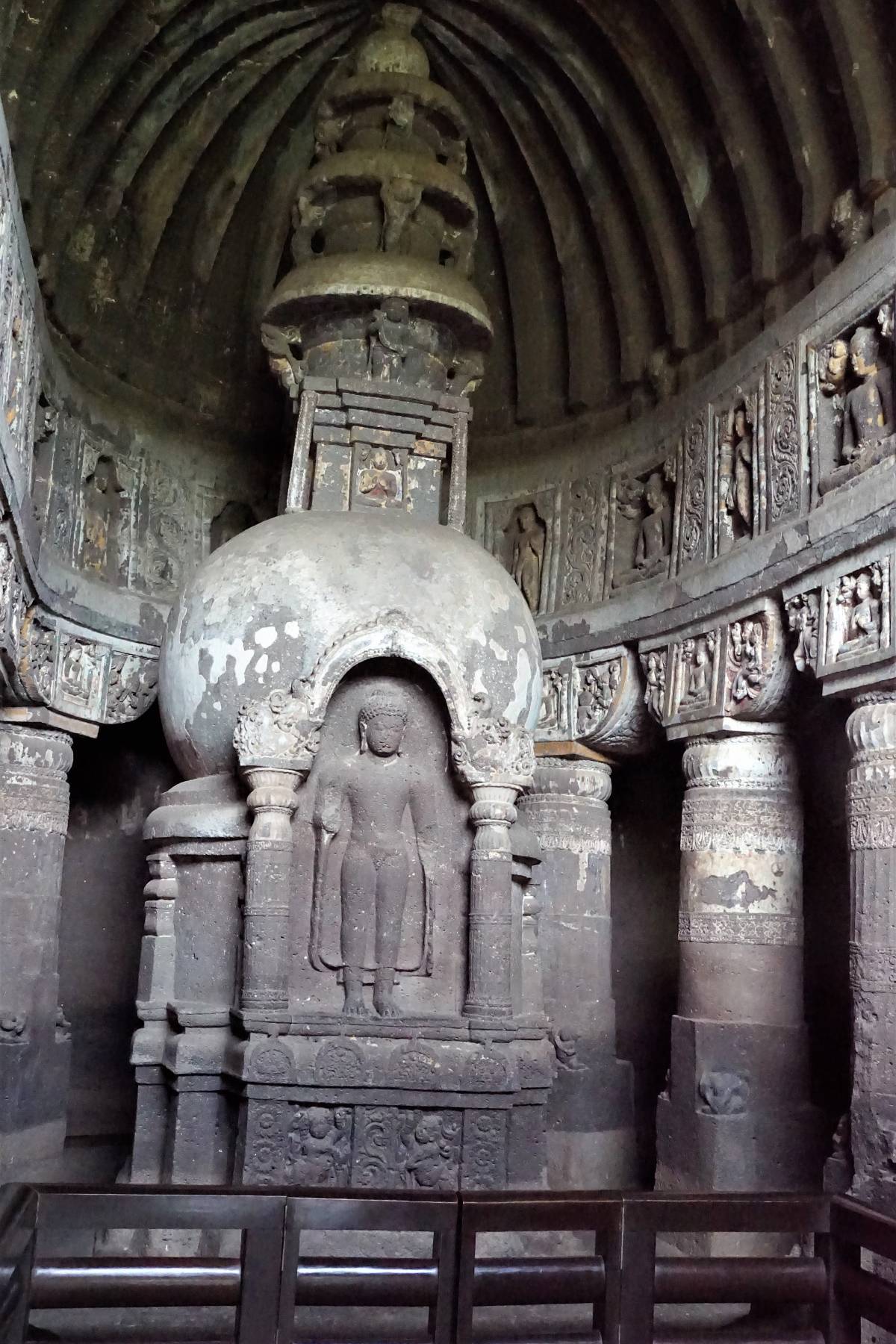
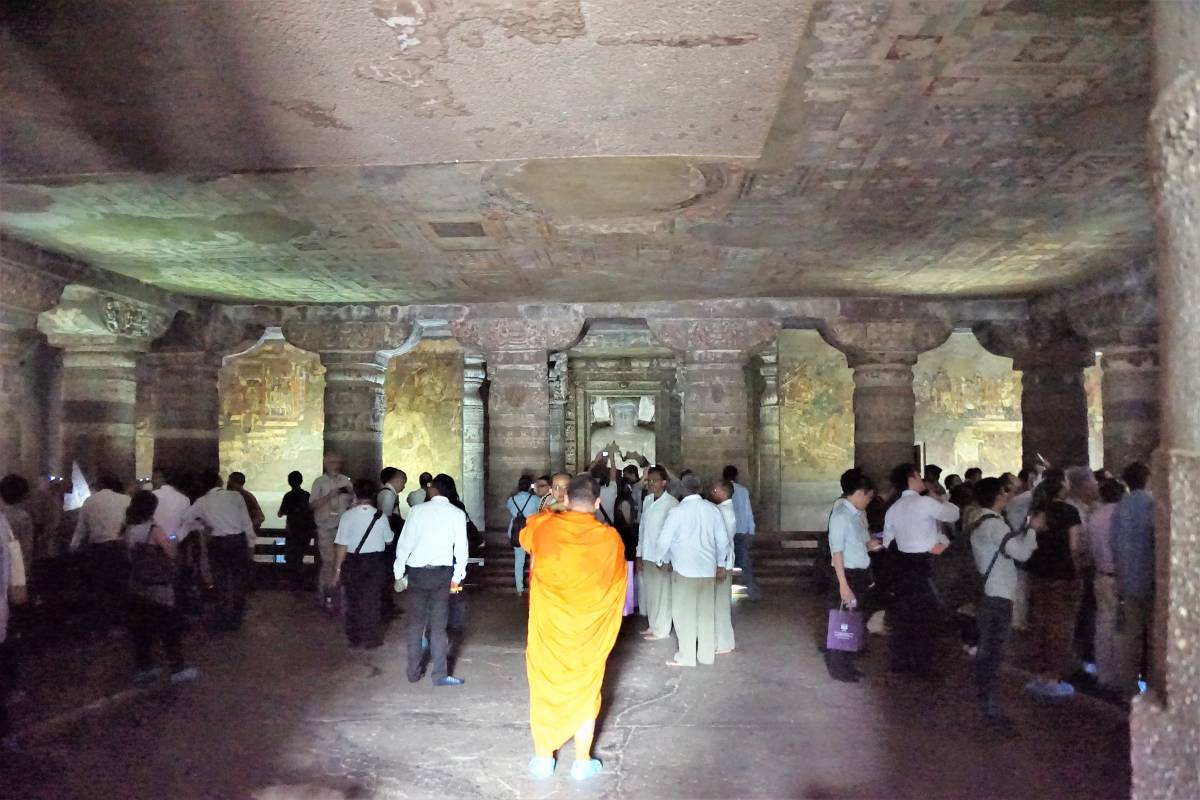

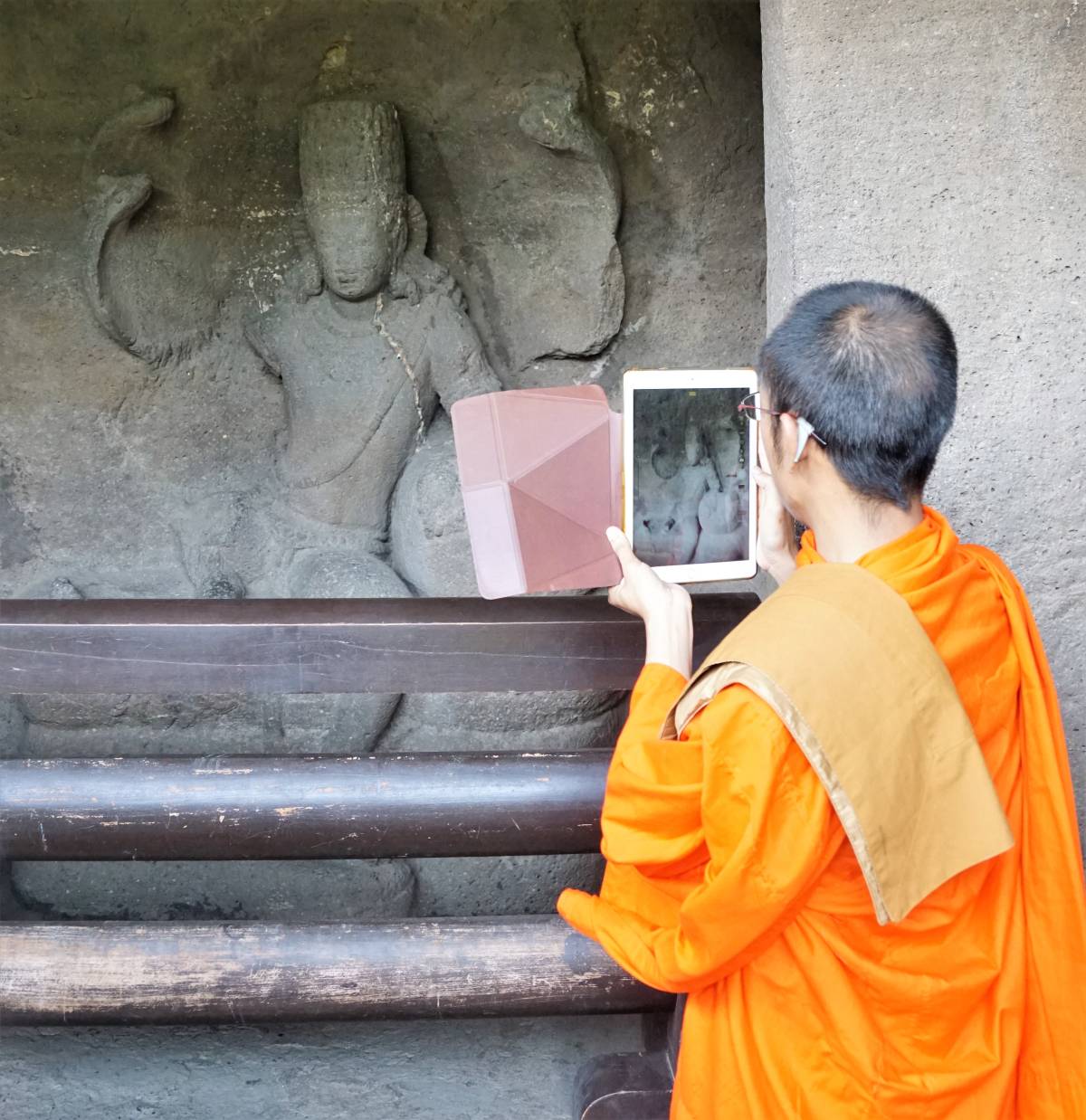

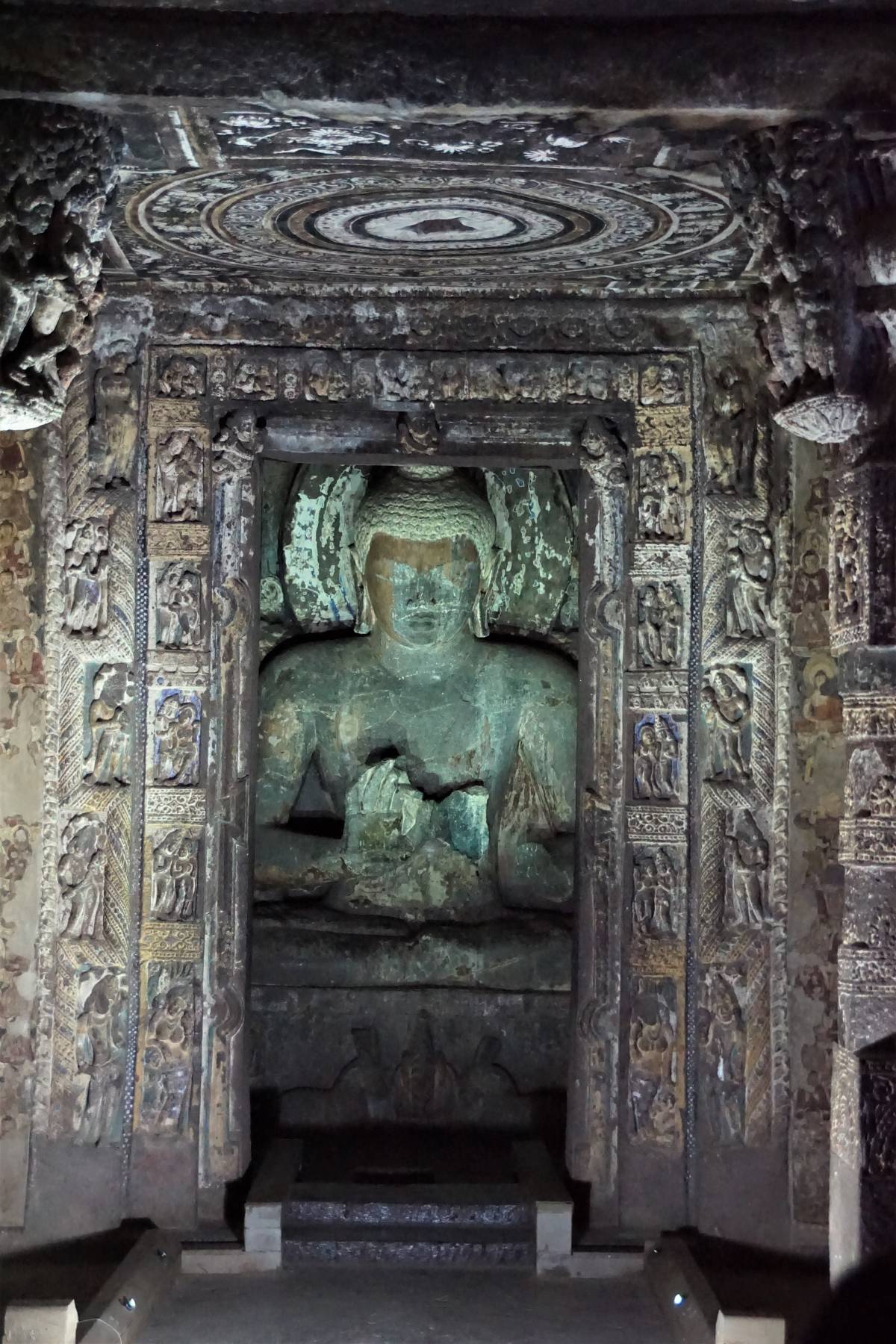


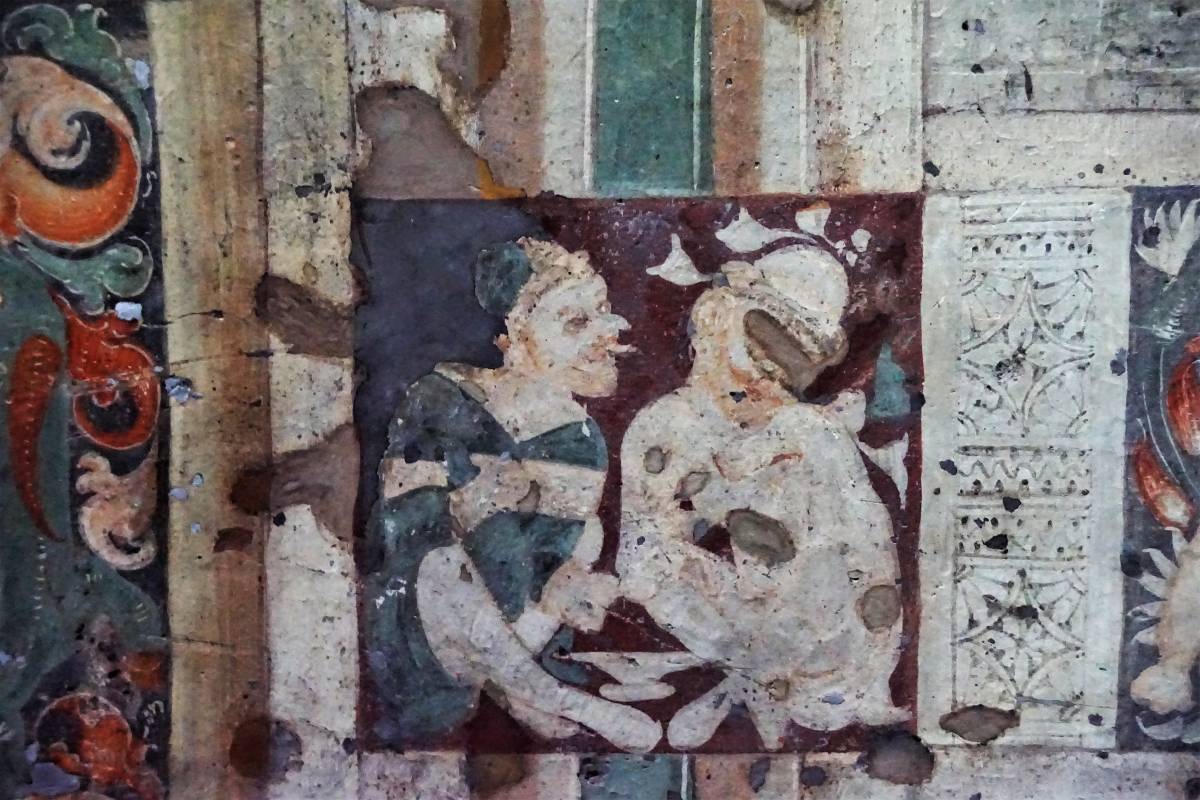
The Visitor's Centre



